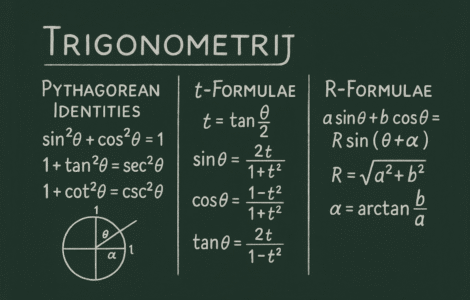
Trigonometry
Free
About This Course
Learners will study the properties and applications of trigonometric functions, identities, and equations. The topic covers right-angled and non-right-angled triangles, unit circle definitions, and solving real-life problems involving angles and lengths.
Learning Outcomes:
The learner should be able to:
- Derive trigonometrical ratios from a right-angled triangle, sine, cosine, tangent of an angle of any magnitude using the quadrants of a unit circle.
- Draw graphs of trigonometrical functions.
- Use the trigonometric ratios of sine, cosine, and tangent to determine their corresponding reciprocals.
- Determine trigonometric ratios of 300, 450 and 600
- use Pythagoras theorem to derive Sin²θ + Cos²θ = 1, and simplify trigonometrical identities prove identities.
- Solve trigonometrical equations and eliminate parameters from pairs of parametric equations.
- Develop the compound angle formulae and use it to deduce the formulae for double angles, half angles, other multi-angles corresponding identities.
- solve trigonometric equations involving inverse trigonometric ratios.
- solve trigonometrical equations of the form 𝑎 cos 𝜃± 𝑏 sin 𝜃 + C = 0, using the t-formulae and the R- formulae.
- find the maximum and minimum of trigonometrical functions involving 𝑎 cos 𝜃± sin 𝜃 +C = 0 and 1/(acos 𝜃±𝑏sin 𝜃+c).
- Derive the formulae for angles of a triangle in terms of the sides, derive the formulae for area of a triangle.
- Derive and apply the sine and cosine rules to solve triangles.
- Model and solve real-world problems involving trigonometry.





